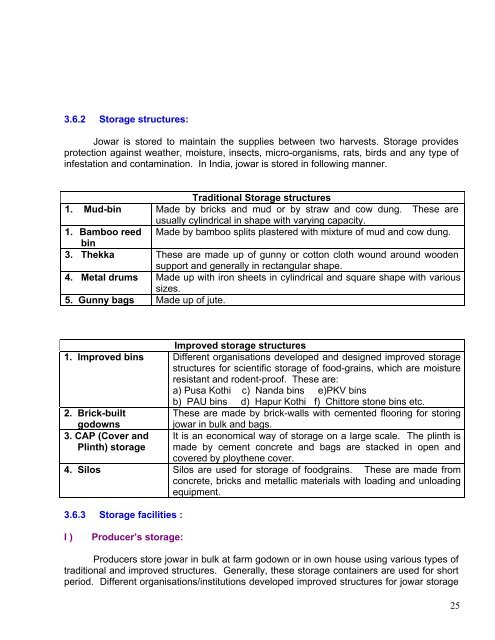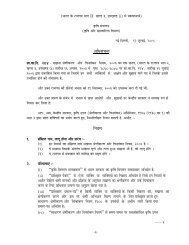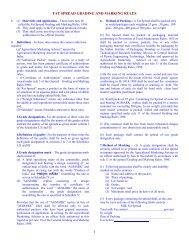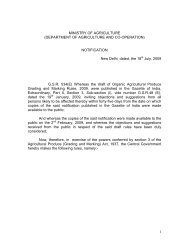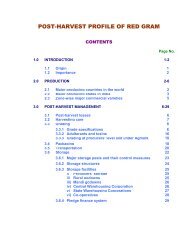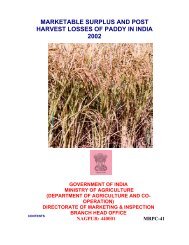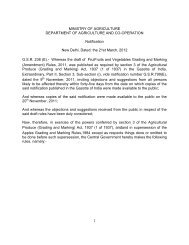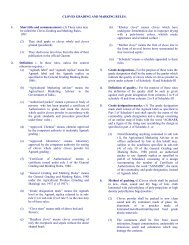POST HARVEST PROFILE OF JOWAR - Agmarknet
POST HARVEST PROFILE OF JOWAR - Agmarknet
POST HARVEST PROFILE OF JOWAR - Agmarknet
You also want an ePaper? Increase the reach of your titles
YUMPU automatically turns print PDFs into web optimized ePapers that Google loves.
3.6.2 Storage structures:<br />
Jowar is stored to maintain the supplies between two harvests. Storage provides<br />
protection against weather, moisture, insects, micro-organisms, rats, birds and any type of<br />
infestation and contamination. In India, jowar is stored in following manner.<br />
1. Mud-bin<br />
1. Bamboo reed<br />
bin<br />
3. Thekka<br />
4. Metal drums<br />
5. Gunny bags<br />
1. Improved bins<br />
2. Brick-built<br />
godowns<br />
3. CAP (Cover and<br />
Plinth) storage<br />
4. Silos<br />
3.6.3 Storage facilities :<br />
I ) Producer’s storage:<br />
Traditional Storage structures<br />
Made by bricks and mud or by straw and cow dung. These are<br />
usually cylindrical in shape with varying capacity.<br />
Made by bamboo splits plastered with mixture of mud and cow dung.<br />
These are made up of gunny or cotton cloth wound around wooden<br />
support and generally in rectangular shape.<br />
Made up with iron sheets in cylindrical and square shape with various<br />
sizes.<br />
Made up of jute.<br />
Improved storage structures<br />
Different organisations developed and designed improved storage<br />
structures for scientific storage of food-grains, which are moisture<br />
resistant and rodent-proof. These are:<br />
a) Pusa Kothi c) Nanda bins e)PKV bins<br />
b) PAU bins d) Hapur Kothi f) Chittore stone bins etc.<br />
These are made by brick-walls with cemented flooring for storing<br />
jowar in bulk and bags.<br />
It is an economical way of storage on a large scale. The plinth is<br />
made by cement concrete and bags are stacked in open and<br />
covered by ploythene cover.<br />
Silos are used for storage of foodgrains. These are made from<br />
concrete, bricks and metallic materials with loading and unloading<br />
equipment.<br />
Producers store jowar in bulk at farm godown or in own house using various types of<br />
traditional and improved structures. Generally, these storage containers are used for short<br />
period. Different organisations/institutions developed improved structures for jowar storage<br />
25


